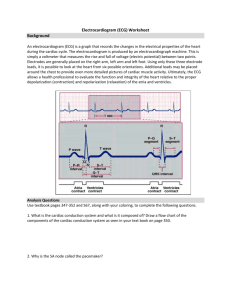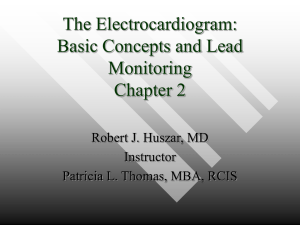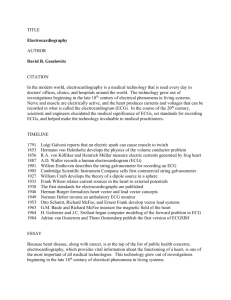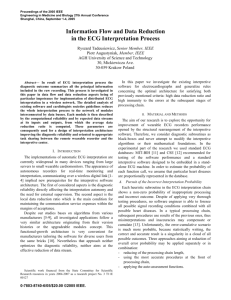View the abstract for the 2009 Fellow`s manuscript.
advertisement
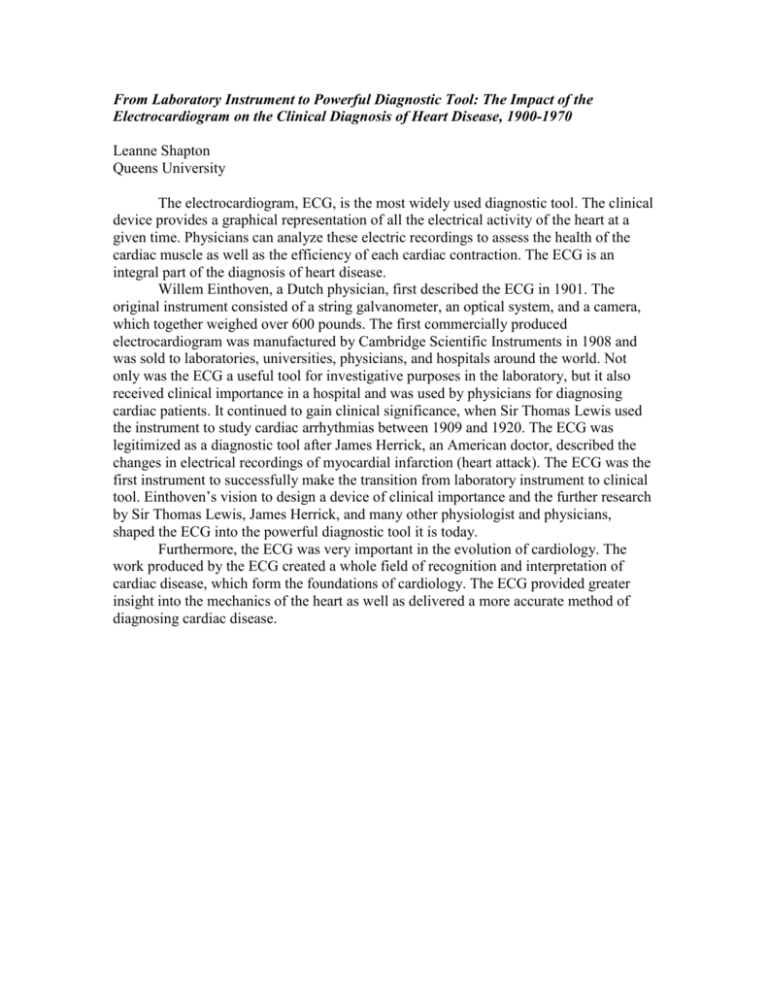
From Laboratory Instrument to Powerful Diagnostic Tool: The Impact of the Electrocardiogram on the Clinical Diagnosis of Heart Disease, 1900-1970 Leanne Shapton Queens University The electrocardiogram, ECG, is the most widely used diagnostic tool. The clinical device provides a graphical representation of all the electrical activity of the heart at a given time. Physicians can analyze these electric recordings to assess the health of the cardiac muscle as well as the efficiency of each cardiac contraction. The ECG is an integral part of the diagnosis of heart disease. Willem Einthoven, a Dutch physician, first described the ECG in 1901. The original instrument consisted of a string galvanometer, an optical system, and a camera, which together weighed over 600 pounds. The first commercially produced electrocardiogram was manufactured by Cambridge Scientific Instruments in 1908 and was sold to laboratories, universities, physicians, and hospitals around the world. Not only was the ECG a useful tool for investigative purposes in the laboratory, but it also received clinical importance in a hospital and was used by physicians for diagnosing cardiac patients. It continued to gain clinical significance, when Sir Thomas Lewis used the instrument to study cardiac arrhythmias between 1909 and 1920. The ECG was legitimized as a diagnostic tool after James Herrick, an American doctor, described the changes in electrical recordings of myocardial infarction (heart attack). The ECG was the first instrument to successfully make the transition from laboratory instrument to clinical tool. Einthoven’s vision to design a device of clinical importance and the further research by Sir Thomas Lewis, James Herrick, and many other physiologist and physicians, shaped the ECG into the powerful diagnostic tool it is today. Furthermore, the ECG was very important in the evolution of cardiology. The work produced by the ECG created a whole field of recognition and interpretation of cardiac disease, which form the foundations of cardiology. The ECG provided greater insight into the mechanics of the heart as well as delivered a more accurate method of diagnosing cardiac disease.


